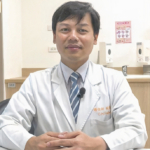In this report, we discuss best practices for RWE generation and the steps needed to enhance the assessment and use of quality RWE in reimbursement decisions.
Key takeaways
- Real-world evidence (RWE) can enable better-informed patient access decisions, but it is underutilised in reimbursement decisions
- This report reviews and synthesises best practices for the generation and use of RWE drawn from highly cited academic papers and published by well-established Health Technology Assessment (HTA) bodies
- Our recommendations focus on ensuring and assessing the quality of real-world data, minimising bias and uncertainty and increasing transparency
- We urge stakeholders internationally to work together to find the best solutions to advance our understanding and use of high-quality data collected in real-world settings, and to promote trust in its use for reimbursement decision-making
Real-World Evidence (RWE) can provide decision-makers in the healthcare sector with insights into the functioning of health technologies outside of clinical trial settings. In this report, we focus on the use of RWE in reimbursement decisions made by health technology assessment (HTA) bodies.
We review key literature that sets out general best practices for RWE generation and current challenges surrounding the incorporation of RWE into reimbursement decisions. We discuss the next steps for enhancing the assessment and use of quality RWE in reimbursement decisions.
RECOMMENDATIONS
Several guidelines and frameworks have been produced and are welcomed, with recommendations coalescing around:
- Quality – the need for data of sufficient quality to answer the research question
- Transparency – transparent evidence generation from planning through to study conduct and reporting
- Bias & uncertainty – the use of analytical methods to minimise bias and appropriately characterise uncertainty
However, more needs to be done to ensure that the RWE used to inform decisions around patient access to medicines is appropriate, transparent, and methodologically sound.
We urge stakeholders internationally to work together to find the best solutions to advance our understanding and use of high-quality data collected in real-world settings. This will aid interpretation and thereby promote trust in its use for reimbursement decision-making.
CASE STUDY – TAIWAN
In this report, we also provide a case study on the use of RWE in Taiwan. Our case study demonstrates that even with established patient registries and de-identifed datasets being available, there are still opportunities for enhancing the collection of real-world data (RWD), enabling more scientifically robust RWE generation, and utilising RWE to its full potential. The opportunities that remain include capitalising on the existing data infrastructure, enhancing consistency and transparency in data use, promoting scientific rigour by ensuring reproducibility and improving stakeholder involvement.
This contract research report, ‘Real-World Evidence: Current Best Practice for Reimbursement Decision-Making’, was commissioned and funded by MSD.




